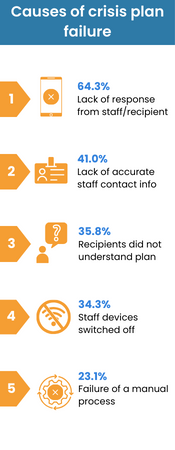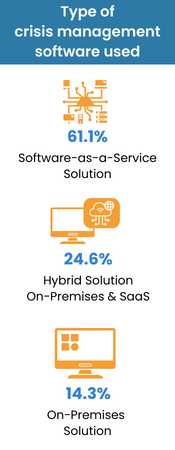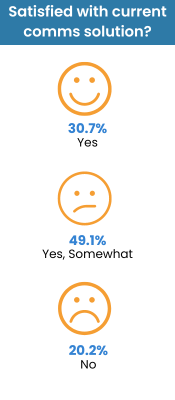Cyber or Ransomware Attack? You need Out-of-Band Communications to Respond
The latest BCI Emergency & Crisis Communication report for 2024 is packed full of eye-opening information and insight that you can implement to improve your operational resilience.
The comprehensive 108-page report lays bare the changes, trends and concerns currently influencing emergency and crisis communications. To cut through the noise and save you time, we've analysed the detailed report and pulled out 5 key takeaways for you to absorb.
- Using an emergency communication tool accelerates your response capabilities
- Mobile phones are the leading device for managing emergency communications
- Inaccurate contact information is the leading cause of response plan failure
- Software-as-a-Service is the leading standard for emergency and crisis communication systems
- Dissatisfaction with communication tools is at an all time high
Takeaway 1
Using an emergency communication tool accelerates your response capabilities
The BCI report found clear evidence that a greater percentage of companies can respond faster when implementing an emergency communication tool.
When using an emergency communication tool 25.7% of organisations were capable of activating response plans in under 5 minutes, with 72.7% able to do so in under 30 minutes. Without a tool, these figures fell to 17% and 57.6% respectively.
The ability to respond quickly ensures staff can make themselves safe sooner, minimising risk. Rapid activation of crisis response teams also means you can resolve incidents faster protecting your reputation and revenue.
Sentinel is built for rapid response, the intuitive interface makes the platform easy to use. You can combine pre-prepared broadcasts and message templates to trigger emergency communications in under 60 seconds.
.png)
Takeaway 2
Mobile phones are the leading device for managing emergency communications
An incredible 92.5% of organisations rely on mobile phones to manage their emergency communications, followed closely by computers/laptops at 89.5%. This is unsurprising as your smartphone is almost always on hand, allowing you the opportunity to respond to a critical event anytime, anywhere.
To make the most of this opportunity you need a communication platform optimised for mobile. This is why our Sentinel emergency mass notification platform is designed for seamless management of critical incidents directly from your smartphone, or any interconnected device.
The platform delivers a device-responsive interface that can be accessed from any web browser. You also have the option of deploying your own enterprise-branded app on iOS and Android complete with the full functionality of the Sentinel platform.
.png)
Takeaway 3
Inaccurate contact information is a primary cause of response plan failure
When exploring why crisis response plans fail, the BCI study found that 41% of organisations cited a lack of accurate staff contact information as a primary factor.
This is most often because companies use a comms system with a contact directory separate from their internal staff database, so details can quickly become outdated.
Sentinel solves this problem by integrating and syncing with your internal contact directory through our API module. Ensuring details used to connect with staff in a crisis are always up-to-date.

Takeaway 4
Software-as-a-Service is the leading standard for emergency and crisis communication systems
When deploying an emergency communication system, the BCI Emergency Communications report highlighted that 61.1% of organisations opted to use a SaaS solution, with a further 24.6% deploying it as part of a hybrid model in combination with an on-premises solution.
Delivering the resilience and availability required of a leading emergency communication platform can only be provided using a cloud deployment model.
Sentinel deployments leverage the power of the cloud with mirrored servers set up in different zones that seamlessly switch over if a primary server fails, giving you peace of mind and class-leading uptime for your emergency communication system.

Takeaway 5
Dissatisfaction with communication tools is at an all-time high
The BCI research discovered 70% of organisations are currently not satisfied with the solutions used to handle critical events. 49.1% of respondents said they were only somewhat satisfied with the tools used, with a further 20.2% stating they were dissatisfied.
This is a deeply concerning trend considering the inherent benefits of using an emergency communication system. Dissatisfaction can quickly lead to disuse and the loss of these benefits.
Here at Sentinel, customer satisfaction is at the heart of everything we do. We achieve this by forming deep partnerships with clients and tailoring our solutions to meet their every need.


06 Mar 2024


